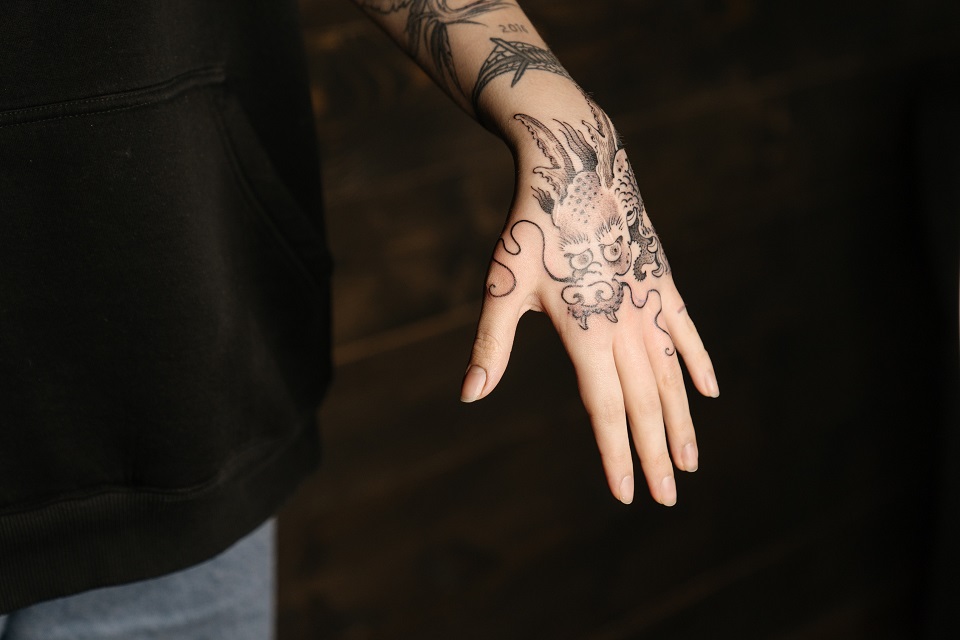Tattoos are excellent at showcasing your style and beautifying your skin. However, you must know that tattooing is an invasive procedure that could have adverse effects if you don’t take proper care of the resultant wound. You expose yourself to scarring and infections whenever you insert objects under your skin.
Taking proper care after tattooing prevents complications and guarantees healing, resulting in a beautiful and legible tattoo. This takes a combined effort between you and your tattooist.
The following are steps of tattoo aftercare you must adhere to for proper healing.
Be Careful with the Bandage
After drawing your preferred image or writing your desired text, the artist applies a moisturising agent over the tattooed area and wraps it in a bandage. You might be tempted to remove it to glimpse your body art, but it isn’t advisable. Instead, it would help if you left the bandage for a few hours to a day, depending on the tattoo’s size and location. It protects the wound from abrasion, bacteria, and sunlight.
Washing the Tattooed Area
After a few hours, you can safely remove the bandage and wash the tattooed area. Clean your hands using a disinfectant before touching the open skin. Then, use hypoallergenic soap and warm water to wipe over the wound. Doing this removes the moisturiser, which usually looks like a dense and sticky substance.
Once clean, use a dry paper towel to remove excess moisture and leave the tattoo exposed for an hour. Apply a thin layer of moisturiser when it dries and allow the skin to breathe, ensuring you avoid direct sunlight.
While washing the tattooed area assists in healing and preventing infections, you must be careful with the amount of water used. Submerging the wound in water before six weeks slows down the healing process.
It’s worth noting that the frequency of washing depends on your environment and physical activity levels. If you work in an office or lead a sedentary lifestyle, wash the tattooed area once daily. Otherwise, you’ll need to do it more often.
After a week, the swelling and redness reduce, and scabs start forming.
Dealing with Scabs and Flakes
Scabs start turning into flakes in the second week. You must be extra careful when washing and moisturising to avoid damaging your tattoo.
The skin feels itchy during flaking. However, you must avoid scratching it to prevent injury. Instead, use more moisturiser or refrigerate before application to relieve the itchiness. If it persists, consider using Benadryl or other similar products.
Final Healing
The last stage of healing takes time and needs patience. The more significant scabs flake and fall off, leaving smaller ones and bits of dead skin. These gradually fall off as you heal.
The tattooed area appears dull and feels dry after flaking. Ensure you protect it against the sun and apply extra moisturiser to keep it soft and good-looking.
After a month, the outer layers of the skin should appear normal. The inner layers require more time but demand less care than the epidermis. Once the skin heals, you become less susceptible to bacterial infections.
What If I Experience Allergic Reactions or Ink Rejection?
Sometimes, your body might reject the tattooing ink, leading to allergic reactions. The most common symptoms include rashes and persistent itching on the tattooed area.
Insist on an allergy test before getting a new tattoo. The artist applies a small amount of the chosen colour on the skin to see how it reacts. If the results are positive, proceed. Otherwise, try another option.
Allergies usually occur because of the ingredients in ink. If you experience the symptoms, seek treatment from a doctor. Alternatively, you can consult your tattooist.
Wrapping Up
Caring for your tattoo is a continuous process that lasts for years. If you want your body art to maintain its appearance, protect it from the sun as much as possible. If you must go outdoors, always apply sunscreen with UV protection.
Lucas Noah, armed with a Bachelor’s degree in Information & Technology, stands as a prominent figure in the realm of tech journalism. Currently holding the position of Senior Admin, Lucas contributes his expertise to two esteemed companies: OceanaExpress LLC and CreativeOutrank LLC. His... Read more
